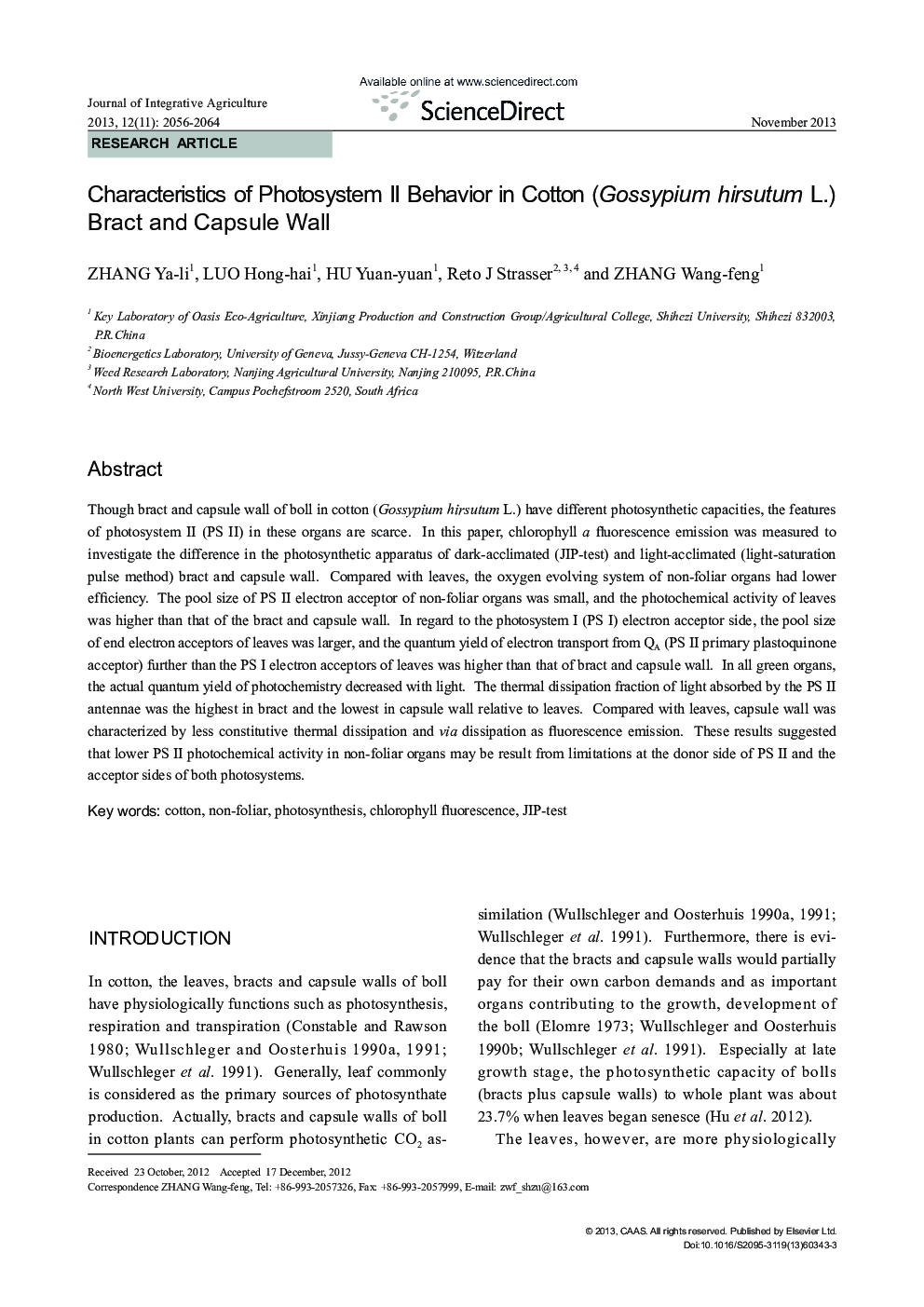| Article ID | Journal | Published Year | Pages | File Type |
|---|---|---|---|---|
| 4494969 | Journal of Integrative Agriculture | 2013 | 9 Pages |
Though bract and capsule wall of boll in cotton (Gossypium hirsutum L.) have different photosynthetic capacities, the features of photosystem II (PS II) in these organs are scarce. In this paper, chlorophyll a fluorescence emission was measured to investigate the difference in the photosynthetic apparatus of dark-acclimated (JIP-test) and light-acclimated (light-saturation pulse method) bract and capsule wall. Compared with leaves, the oxygen evolving system of non-foliar organs had lower efficiency. The pool size of PS II electron acceptor of non-foliar organs was small, and the photochemical activity of leaves was higher than that of the bract and capsule wall. In regard to the photosystem I (PS I) electron acceptor side, the pool size of end electron acceptors of leaves was larger, and the quantum yield of electron transport from QA (PS II primary plastoquinone acceptor) further than the PS I electron acceptors of leaves was higher than that of bract and capsule wall. In all green organs, the actual quantum yield of photochemistry decreased with light. The thermal dissipation fraction of light absorbed by the PS II antennae was the highest in bract and the lowest in capsule wall relative to leaves. Compared with leaves, capsule wall was characterized by less constitutive thermal dissipation and via dissipation as fluorescence emission. These results suggested that lower PS II photochemical activity in non-foliar organs may be result from limitations at the donor side of PS II and the acceptor sides of both photosystems.
